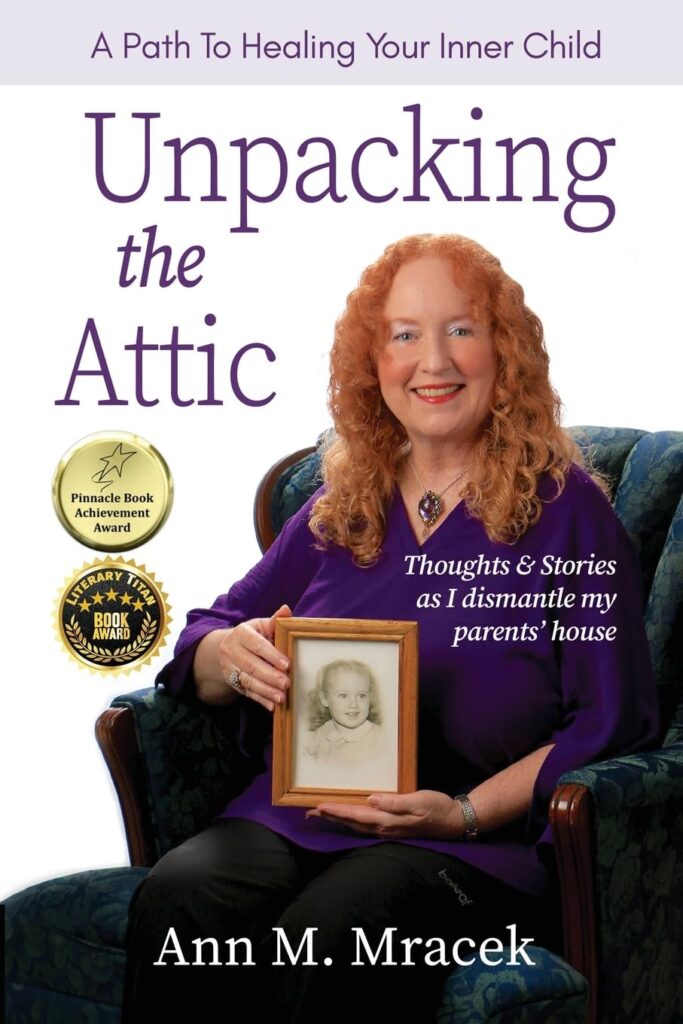
One of the most profound ways in which healing your inner child can transform your life is by improving your ability to form and maintain healthy relationships. Often, the wounds we carry from childhood can hinder our relationships as adults, creating patterns of distrust, insecurity, and emotional distance. However, healing the inner child opens the door to more authentic connections with others, fostering love, empathy, and mutual understanding.
Understanding the Inner Child and Relationships
In Unpacking the Attic: A Path to Healing Your Inner Child, Ann M. Mracek explores how childhood experiences—both positive and negative—shape our emotional and psychological patterns as adults. Our inner child holds memories of past interactions, which influence our behavior and reactions in relationships today. If we experienced neglect, abandonment, or emotional wounds as children, we may carry those unresolved issues into our adult relationships, often without realizing it.
For example, someone who was neglected as a child may struggle to trust their partner fully, fearing rejection or abandonment. Alternatively, someone who experienced emotional invalidation may have difficulty expressing their feelings or may fear being judged by others. These unresolved emotional scars can lead to dysfunctional patterns, such as codependency, avoidance, or difficulty in setting boundaries.
Healing the Inner Child: A Path to Healthier Relationships
Healing your inner child is an essential step in breaking these negative patterns and fostering healthier, more fulfilling relationships. By addressing the emotional wounds from the past, you can begin to reframe your beliefs and responses, creating space for healthier interactions with others. Mracek’s book emphasizes that healing requires self-awareness, self-compassion, and a commitment to personal growth.
Here are some ways in which healing your inner child can improve your relationships:
- Increased Self-Awareness: Healing the inner child requires introspection. As you become aware of the wounds and triggers from your past, you gain insight into how these experiences influence your current relationships. This awareness allows you to respond consciously rather than react impulsively to emotional triggers.
- Healthier Communication: One of the key benefits of healing the inner child is developing healthier communication skills. When we heal from past wounds, we learn how to express our feelings in a constructive way, without fear of rejection or criticism. This fosters deeper emotional intimacy with others, whether in romantic, familial, or platonic relationships.
- Breaking Negative Patterns: Inner child healing allows you to identify and break negative relationship patterns. By acknowledging and healing old wounds, you can free yourself from repeating unhealthy dynamics, such as playing the victim, seeking validation from others, or tolerating disrespect.
- Setting Boundaries: Part of healing your inner child is learning to set healthy emotional boundaries. If you were not taught healthy boundaries as a child, you may struggle with saying “no” or allowing others to take advantage of you. As you heal, you can establish clear and respectful boundaries, which is crucial for maintaining balanced relationships.
- Emotional Resilience: Healing the inner child also leads to greater emotional resilience. By processing past pain and learning to nurture yourself, you become more equipped to handle conflict and challenges in relationships. You can approach difficulties with empathy and understanding, rather than fear or defensiveness.
- Self-Love and Acceptance: Ultimately, healing your inner child leads to a greater sense of self-love and acceptance. As you learn to care for and nurture your inner child, you become more secure in yourself, which naturally translates into healthier relationships with others. You are more likely to attract people who respect and appreciate you for who you truly are.
The Importance of Continuous Healing
It’s important to note that healing the inner child is an ongoing process. As Mracek explains in Unpacking the Attic, healing isn’t a one-time fix but a lifelong journey of self-discovery and emotional growth. By continually nurturing your inner child and addressing unresolved emotions, you can ensure that your relationships remain healthy and thriving.
In conclusion, healing your inner child is not only about addressing past trauma but also about creating the foundation for healthier, more fulfilling relationships. By breaking free from old patterns and embracing self-awareness, self-compassion, and emotional resilience, you open yourself up to deeper connections with others, paving the way for stronger, more authentic relationships.